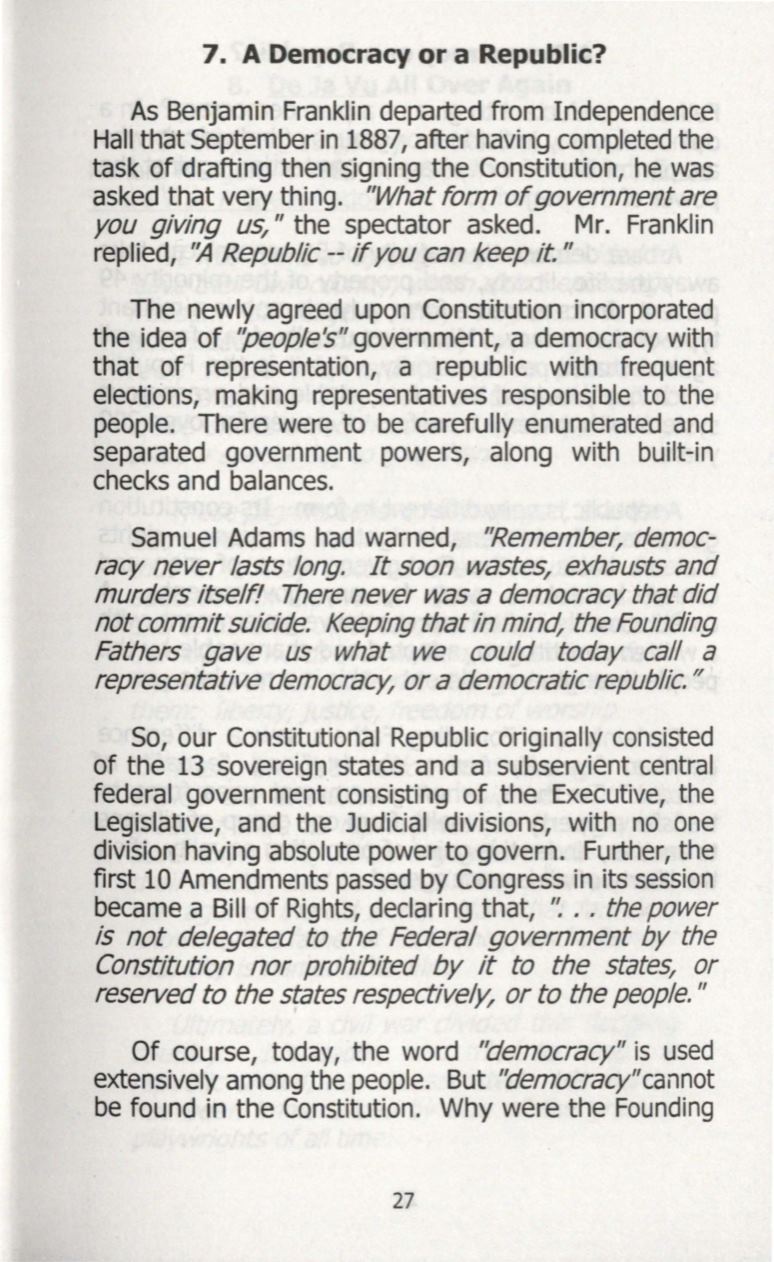

7. A Democracy or a Republic?
As Benjamin Franklin departed from Independence
Hall that September in 1887, after having completed the
task of drafting then signing the Constitution, he was
asked that very thing.
11
What form ofgovernment are
you giving us/"
the spectator asked. Mr. Franklin
replied, 'l1
Republic
--
ifyou can keep it."
The newly agreed upon Constitution incorporated
the idea of
''people's"
government, a democracy with
that of representation, a republic with frequent
elections, making representatives responsible to the
people. There were to be carefully enumerated and
separated government powers, ·. along with built-in
checks and balances.
Samuel Adams had warned,
"Remember, democ–
racy never lasts long. It soon wastes/ exhausts and
murders itself! There never was a democracy that did
not commit suicide. Keeping that in mind, the Founding
Fathers gave us what we could today call a
representative democracy, or a democratic republic.
"
So, our Constitutional Republic originally consisted
of the 13 sovereign states and a subservient central
federal government consisting of the Executive, the
Legislative, and the Judicial divisions, with no one
division having absolute power to govern. Further, the
first 10 Amendments passed by Congress in its session
became a Bill of Rights, declaring that,
'~
..
the power
is not delegated to the Federal government by the
Constitution nor prohibited by it to the states, or
reserved to the states
respective/~
or to the people.
"
Of course, today, the word
"democracy"
is used
extensively among the people. But
''democracy"
cannot
be found in the Constitution. Why were the Founding
27
















